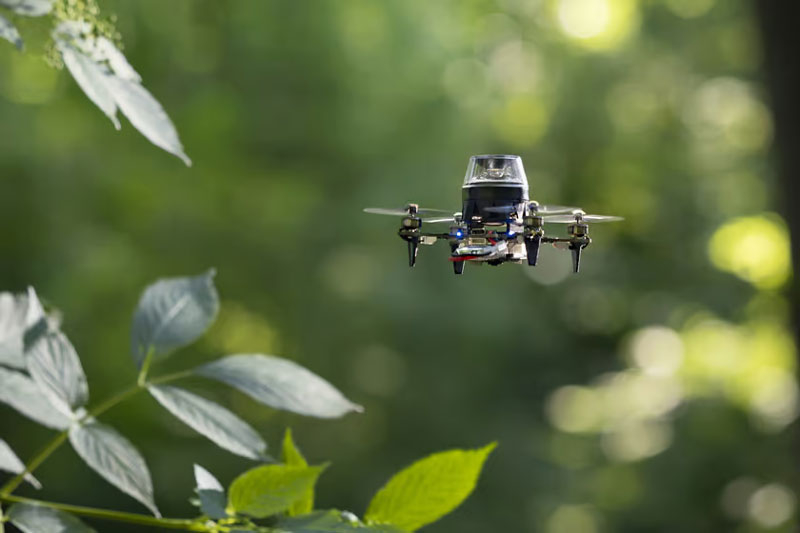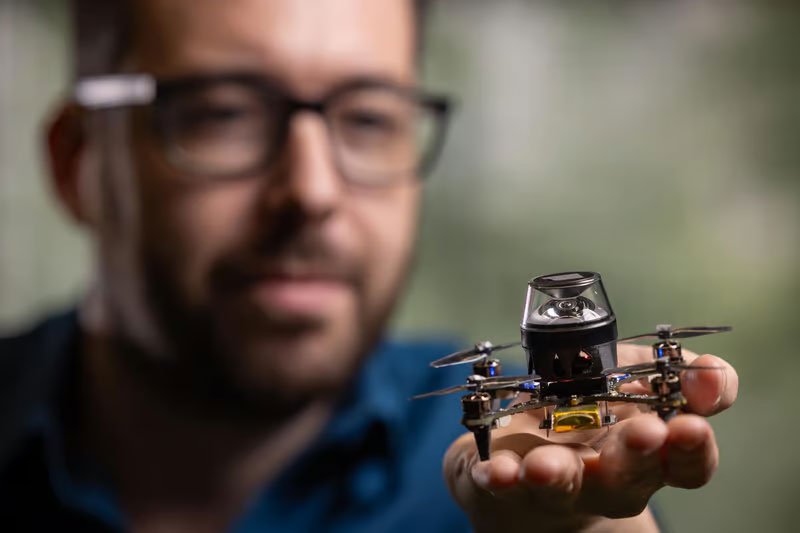Today, the system for positioning drones in space, for example, to independently return to base, requires either radio signals or powerful computing facilities on board the copters. Such solutions are not suitable for work in conditions of limited communication or for miniature devices. At the same time, ants and bees have no problems with orientation in space, despite their miniature size. It turns out that drones can do this too.

Image source: TU Delft
Ants combine two approaches to remember the way back. First, they take “panoramic pictures” of the surrounding area with their own eyes. Second, they “count” the number of steps between the places they remember. By comparing one and the other, the ant is able to return home after any trip. Aerial drones cannot count steps, although the ability to take panoramic photos is not a problem for them.
Flying drones can use a different odometry method learned from bees. Bees remember the speed of movement between locations by the speed of movement of objects over which they fly. This also helps to remember the direction of movement.

Scientists at the Technical University of Delft in the Netherlands (TU Delft) combined both technologies in a tiny 56-gram quadcopter called the CrazyFlie, which was too small to carry a powerful autonomous navigation system. When changing routes, he took a panoramic photo of the area, and then remembered the time and speed of movement to the next shooting location. By scrolling through locations in reverse order, the drone was able to return home through the 100th maze using only 1.16 KB of memory.
Someday, thousands of tiny drones with similar technology will be able to independently carry out their work of inspecting objects, monitoring agricultural crops, or even pollinating plants, relying only on the ant’s ability to navigate in space. It will be a fun evolution.